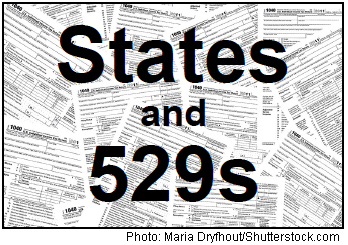The massive tax reform package that Congress approved last December included a change in 529 college savings accounts to allow annual withdrawals of up to $10,000 to cover tuition in elementary and secondary schools. Now a number of states are scrambling to figure out exactly what that change might mean for taxpayers who have 529 accounts that also benefit from state tax breaks.
In states that have no tax provisions relating to college savings accounts, the issue is straightforward. Deposits into the accounts are not deductible for federal tax purposes, but earnings accumulate tax free at the federal level if used for qualified expenses. Since K-12 tuition is now a qualified expense, withdrawals for tuition up to the allowable annual limit may be taken without incurring any federal tax.
But with state 529 plans, it could be a different story. States generally allow 529 plans to grow free of state tax, and some even provide state tax deductions or credits for all or part of the contribution to a college 529 account. But will states allow for credits, deductions, and tax-free growth if funds are used for elementary and secondary tuition? Will families incur a state tax penalty if they withdraw 529 funds for K-12 tuition? Those are exactly the issues that states are actively trying to figure out. Some have already arrived at answers.
Read more about how states are handling the 529 issue in the February issue of CAPE Outlook.

